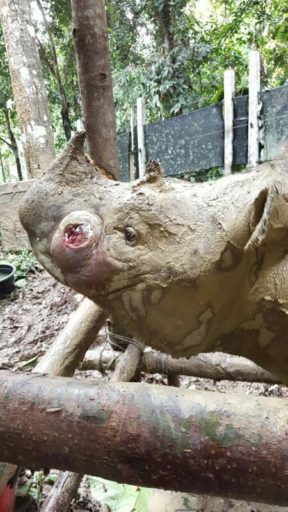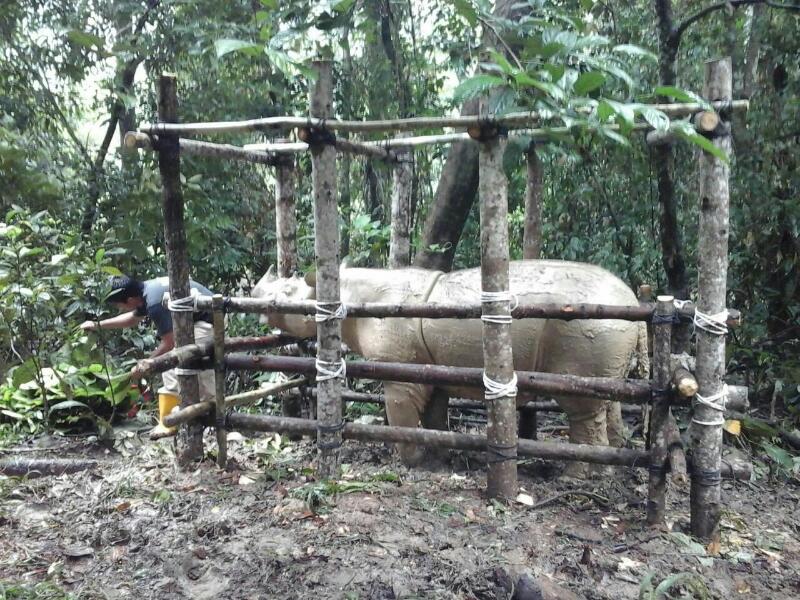- Puntung, one of three Critically Endangered Sumatran rhinos known to survive in Malaysia, is suffering from an abscess in her jaw.
- The rhino’s caretakers feared she would not survive the infection despite receiving round-the-clock veterinary care.
- Since Saturday, Puntung has shown signs of improvement, although she is “not out of the woods yet.”
“After a week of grave concern, we have some positive news,” the Borneo Rhino Alliance (BORA) announced today. “Puntung looks like she’s getting better.”
Female Sumatran rhinoceros (Dicerorhinus sumatrensis) Puntung, is suffering from an abscess in her jaw, a condition that could lead to sepsis and eventually death. As recently as Friday, the rhino’s caretakers feared she would not survive the weekend.

Puntung, estimated to be around 25 years old, is one of three Sumatran rhinos known to survive in Malaysia. All three were born in the wild and are currently cared for at the Borneo Rhino Sanctuary in Tabin Wildlife Reserve in Malaysian Borneo’s Sabah State.
Sumatran rhinos were declared extinct in the wild in Malaysia in 2015. Between 50 and 100 of the Critically Endangered species are believed to survive in Indonesia, including seven at the Sumatran Rhino Sanctuary in Way Kambas National Park in southern Sumatra.
Puntung’s severe illness had raised alarm due to the low overall numbers of Sumatran Rhinos, and to the role BORA hoped she might play in efforts to breed more rhinos using experimental in vitro fertilization (IVF) techniques. Puntung has reproductive pathologies that leave her unable to carry a pregnancy, but is still producing eggs.
Deteriorating health, then signs of improvement
According to the Sabah Wildlife Department, Puntung showed alarming symptoms on Thursday and Friday, including loss of appetite and energy, and bleeding from her left nostril.
“She ate very little over those two days, and spent most of the daytime lethargic in her wallow,” Sabah Wildlife Department director Augustine Tuuga said in a press statement.
On Saturday, the bleeding stopped and Puntung became more active — an improvement BORA attributes to constant attention, antibiotics, fruit and supplements.
The rhino’s caretakers are cautiously optimistic about her condition. “While we are delighted that she is eating once again, she’s not out of the woods yet,” BORA said. “We still have much to do and need to proceed with caution and urgency.”
Puntung will continue to receive care at the Borneo Rhino Sanctuary. The facility is also in contact with specialist rhino veterinary surgeons in South Africa, although Puntung has reportedly not cooperated with attempts to get a clear x-ray of her jaw.
“We have been trying to take an X-ray for the past four days but she is irritated not only by pain but by our attention, not least the injections,” the sanctuary’s manager and veterinarian Zainal Zainuddin explained in a press statement.
Banner Image: Courtesy of the Sabah Wildlife Department.
FEEDBACK: Use this form to send a message to the author of this post. If you want to post a public comment, you can do that at the bottom of the page.
